Main Components Of A Generator – A Detailed Guide
A generator is a machine that provides safe electrical power when there is no availability of a local grid, we mostly use the generator during an extended blackout, camping, farming, etc. The bottom line is we can use it to get electrical power anywhere.
Without further wasting time let’s explore the components of a generator;
Components Of A Portable/Diesel Engine Generator
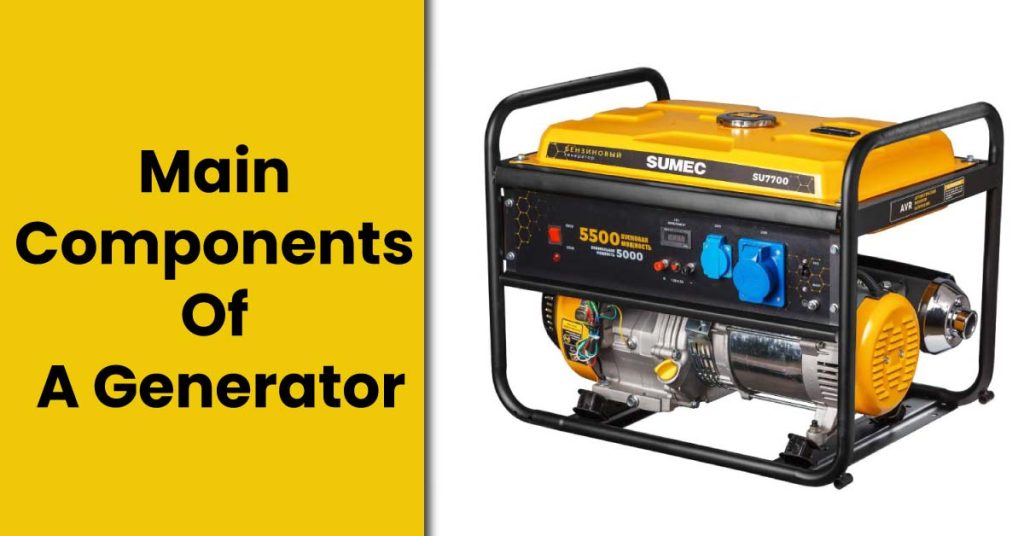
Engine:
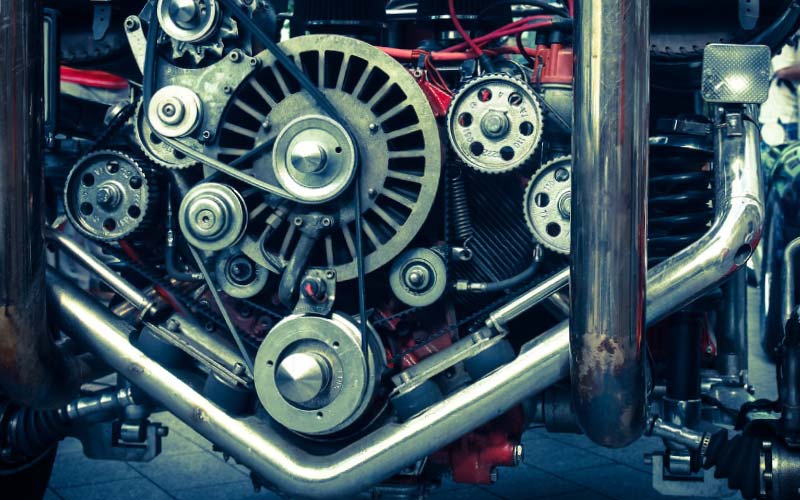
The engine is the heart of the generator which supplies mechanical energy to the generator. An engine converts the fuel source to mechanical energy and then other parts of the generator utilize it to produce electrical power.
The size of the engine is directly proportional to the output power, the larger the engine in terms of horsepower and cc (cubic centimeter), the larger the power.
Well, engines work on different fuels like diesel, gasoline, and propane, and also some modern engines work on dual fuel as well.
Smaller units have gasoline, propane, or dual fuel mode however larger units mostly run on diesel.
Alternator:
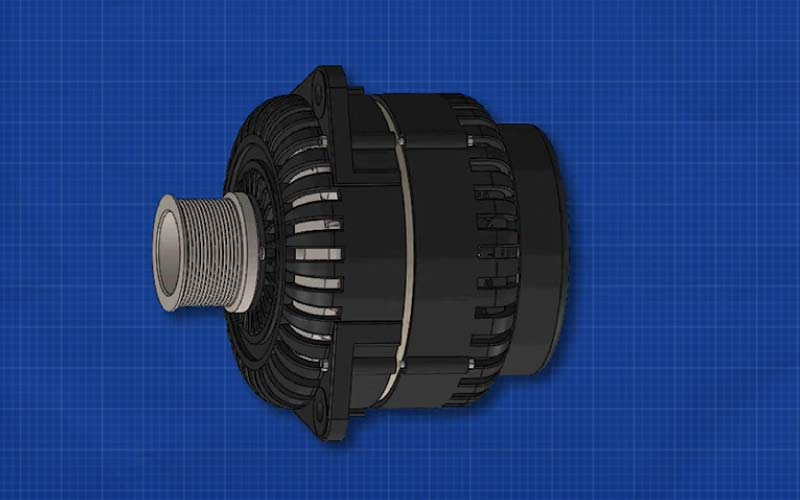
The alternator is also known as a “genhead” which turns the mechanical energy of the engine into electrical energy in the form of AC (alternating current).
An alternator contains lots of moving and nonmoving components combined in an assembly so that they can work properly for producing current.
The main components of the alternator are the rotor, magnate, and Stator.
Checkout our comparison of alternator and generator
Fuel System:
The fuel tank is mostly located on the top of the generators with an entrance for filling, however, if you are going to operate on LPG you have to connect a separate tank with a hose.
Almost all generators have a perfectly sized tank that can run for at least 7 -14 hours depending on the efficiency.
The following are the main functions of the fuel tank.
Control Panel:
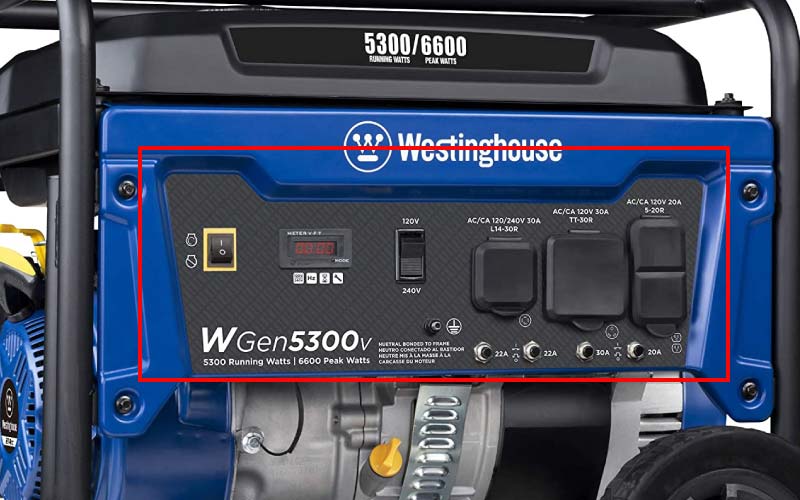
The Control panel will provide you lots of outlets, indicators like fuel RPM, run time, oil gauge, temperatures, auto-shutoff function, output/input voltages, and many more.
The Control panel will also help you to indicate what’s wrong with your unit by indicators like overload, voltages, temperatures, etc.
The bottom line is the control panel contains all of the essentials you are going to use.
Checkout our guide about run a generator in the rain
Voltage Regulator:
The voltage regulator is the only component to provide steady smooth output voltages.
As the generator produced unsteady voltages the voltage regulator goes to the equilibrium to provide sufficient steady DC (Direct Current).
We can’t operate our appliances perfectly without having a voltage regulator.
I don’t want to go into details about how VR works because there are lots of complex processes that occur, we need a spate article for that or you can follow this guide.
Battery Charger:
Like vehicles, the generator needs a battery for an initial startup if you want to operate it with a push start, however, with a rope you don’t have to use the electricity of the battery.
Also, the battery will be charged periodically when the generator runs, since the generator has a charger and provide float voltage to keep your battery charged.
The floats voltage shouldn’t be too low because your battery can’t be charged, however, it should be too high to shorten the life of your battery.
Cooling System:
Like a car, the cooling system is equally important for the generators. Some units use an air-cooled system, however, others use a liquid cooling system.
Air-cooled systems are mostly used in a small portable generator and medium standby generator of 22Kw.
While the liquid cooling system may found in larger units, some of the medium-large units have fresh raw water as a cooling system however the industrial huge machines of 2250Kw or more have hydrogen cooling systems to cool down the unit instantly.
Exhaust System:
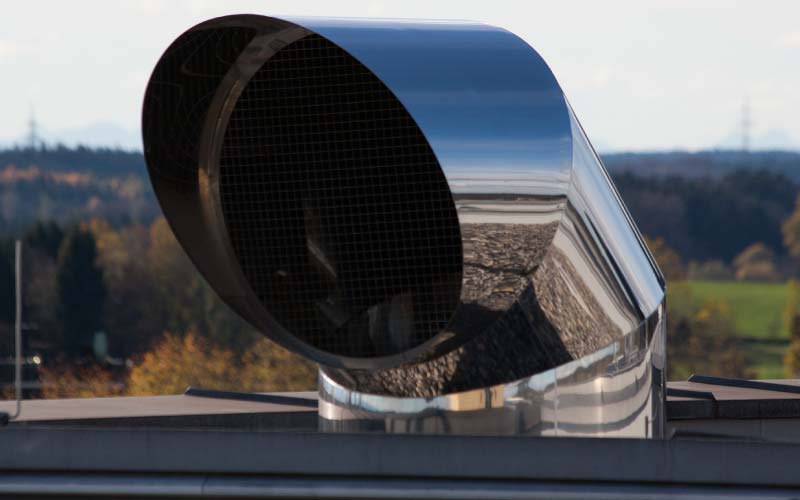
Every generator has an exhaust system on the bottom or top to remove dangerous flue gases safely, exhaust pipes are usually made of cast iron or steel to withstand the heat of gases.
Exhaust should be managed properly to avoid incidents. The flue gases contain silent killers like CO (carbon monoxide) which is odor and colorless you can only detect it with a detector.
We have written a proper guide on generator safety make sure to have a look.
Lubrication System:
It is the part of the generator attached to the engine for supplying the oil to the engine to mitigate the fraction.
Rough metal sliding can cause the engine to cease. The constant supply of oil to the engine will help to lubricate all engine parts and also absorb the heat in order to get smooth running.
The engine oil of the generator should be inspected after every 10 – 12 hours of running, however, it should be replaced after 450 – 500 hours.
Main / Frame Assembly:
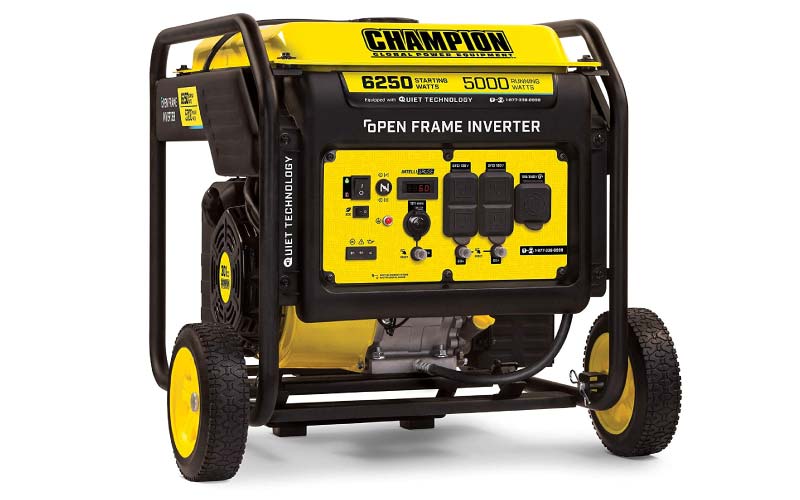
Every component of the generator is covered together in a frame for safer operation. Also, the frame plays a vital role to reduce the noise levels and prevent your machine from any damage.
The mainframe or skid is designed to place it on concrete, earth, or on any cart board to properly ground/ earth it.
Modern generator frames have rounded wheels, mounting for trailers, and carrying handles for easy transportation.

Josh is a highly skilled electrician with specialized expertise in the field of generators. With years of experience under his belt, he has established himself as an expert in all aspects of generators, ranging from installation and maintenance to troubleshooting and repairs. Josh’s in-depth knowledge of electrical systems and his commitment to staying updated with the latest industry advancements make him a reliable and sought-after professional.
